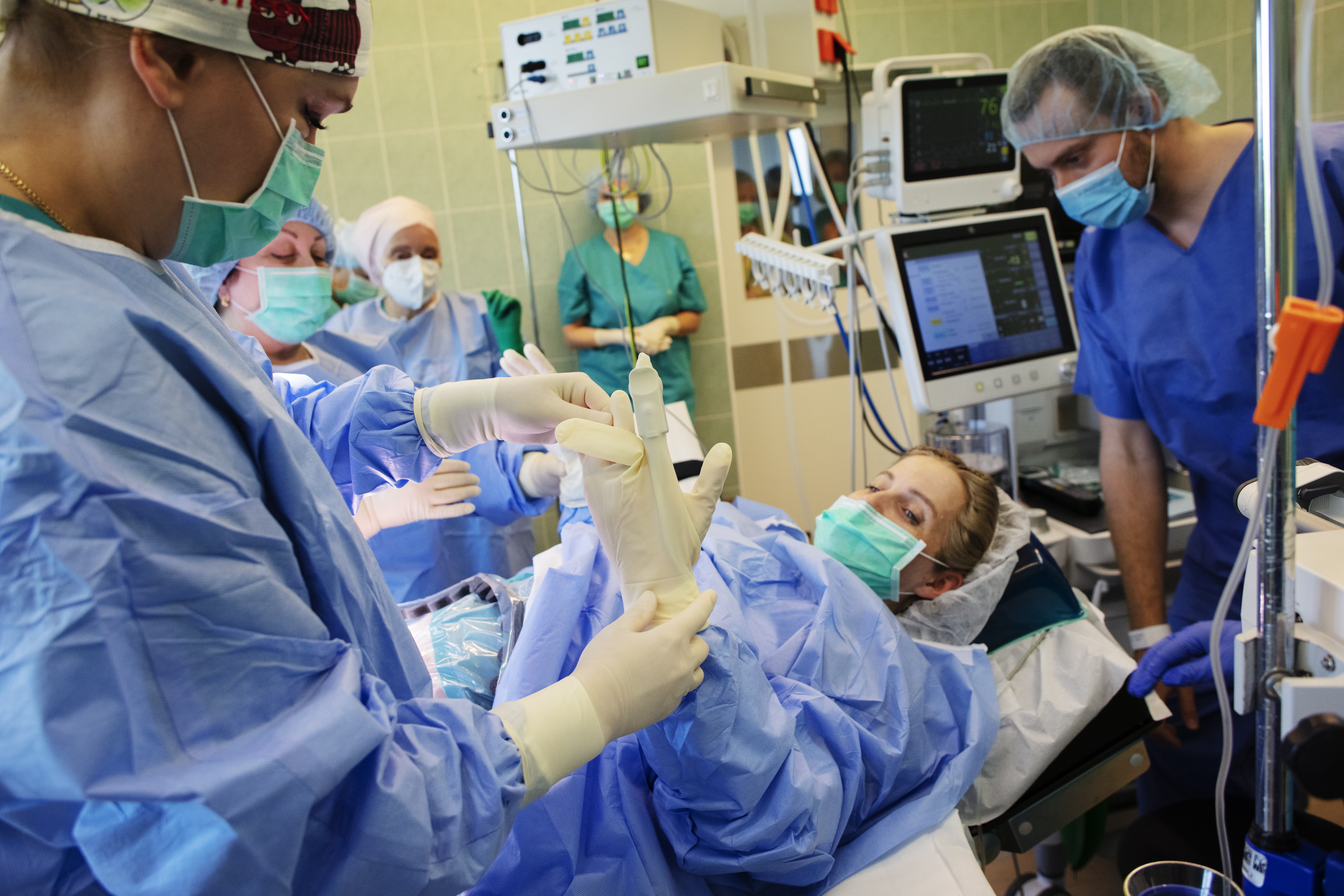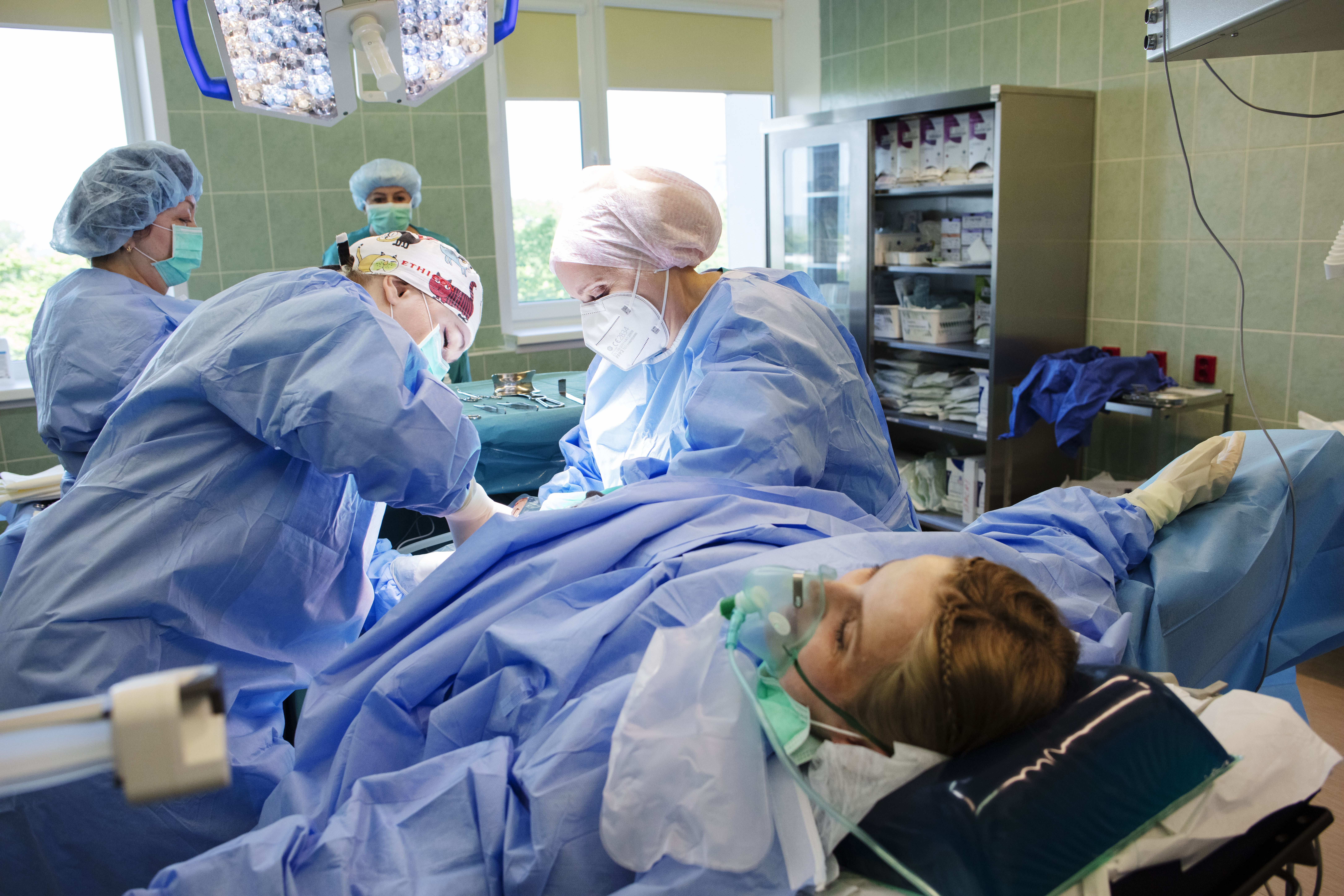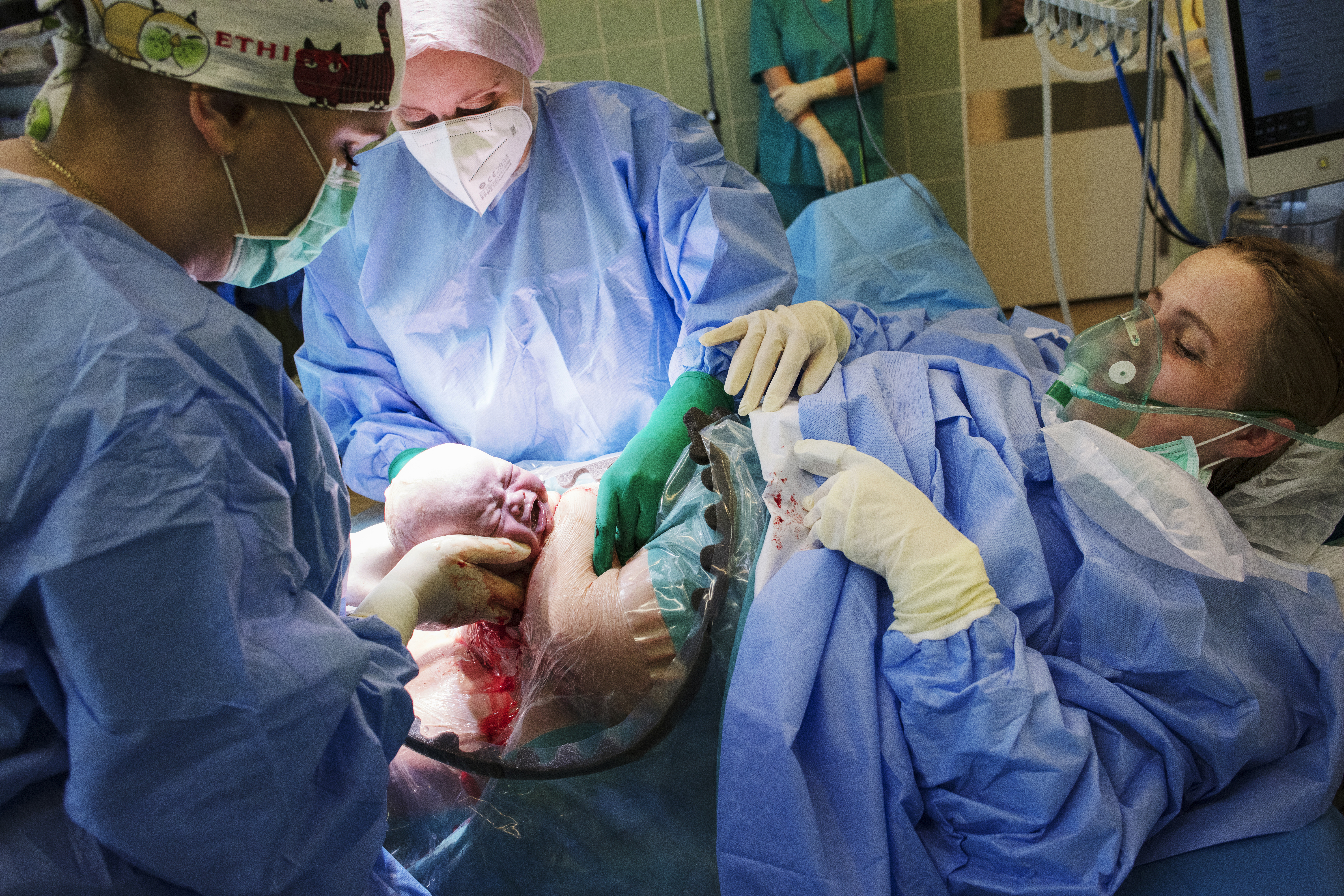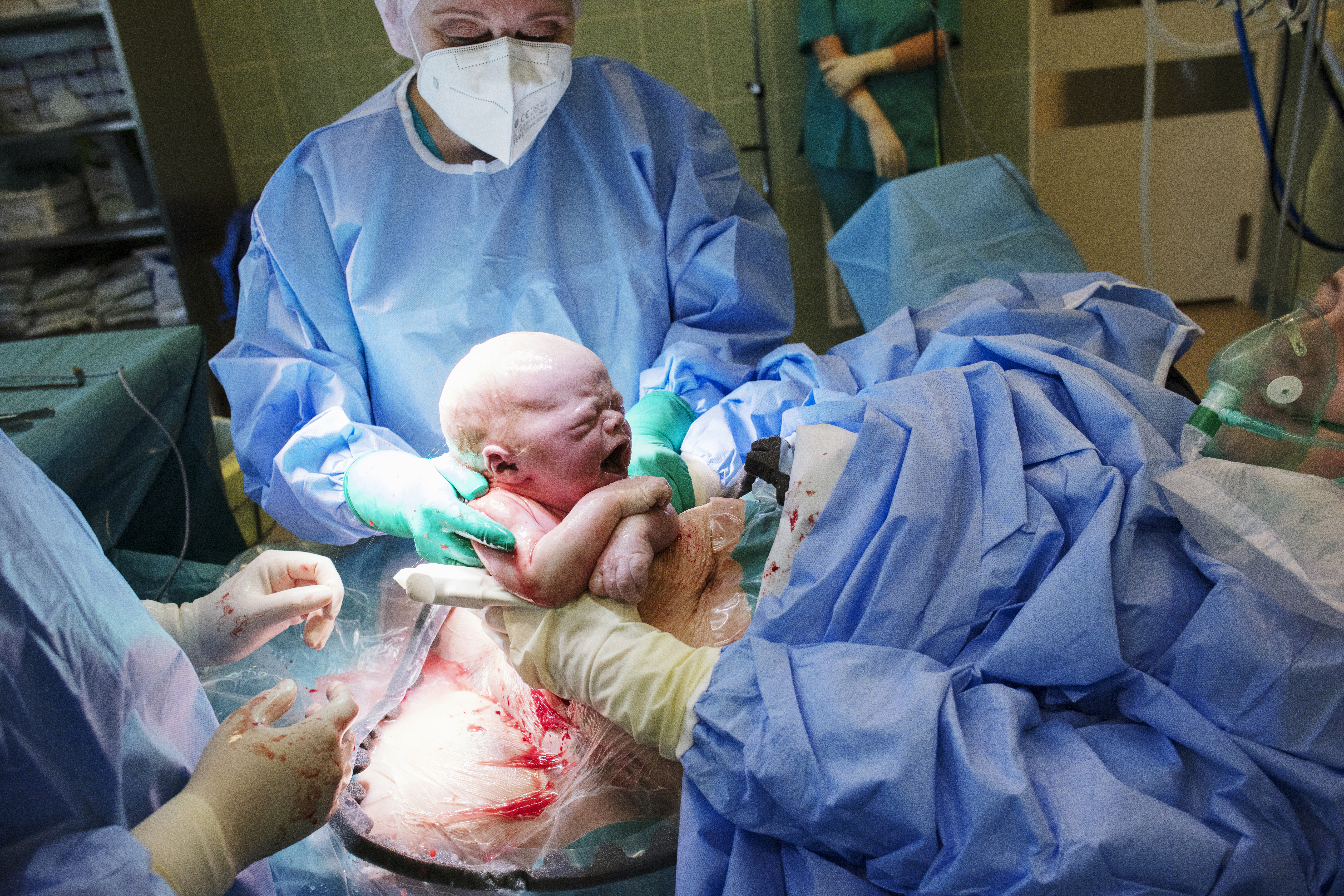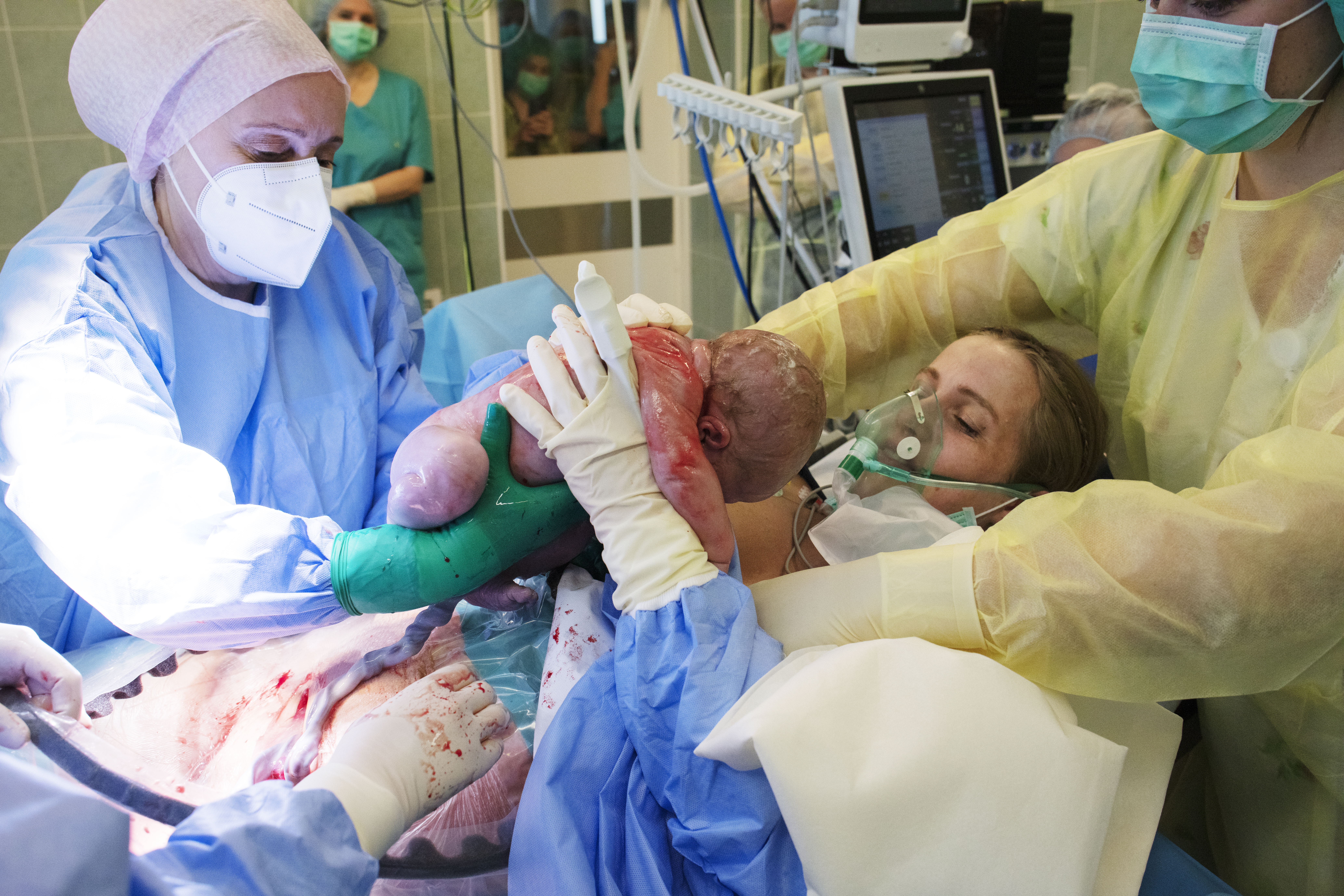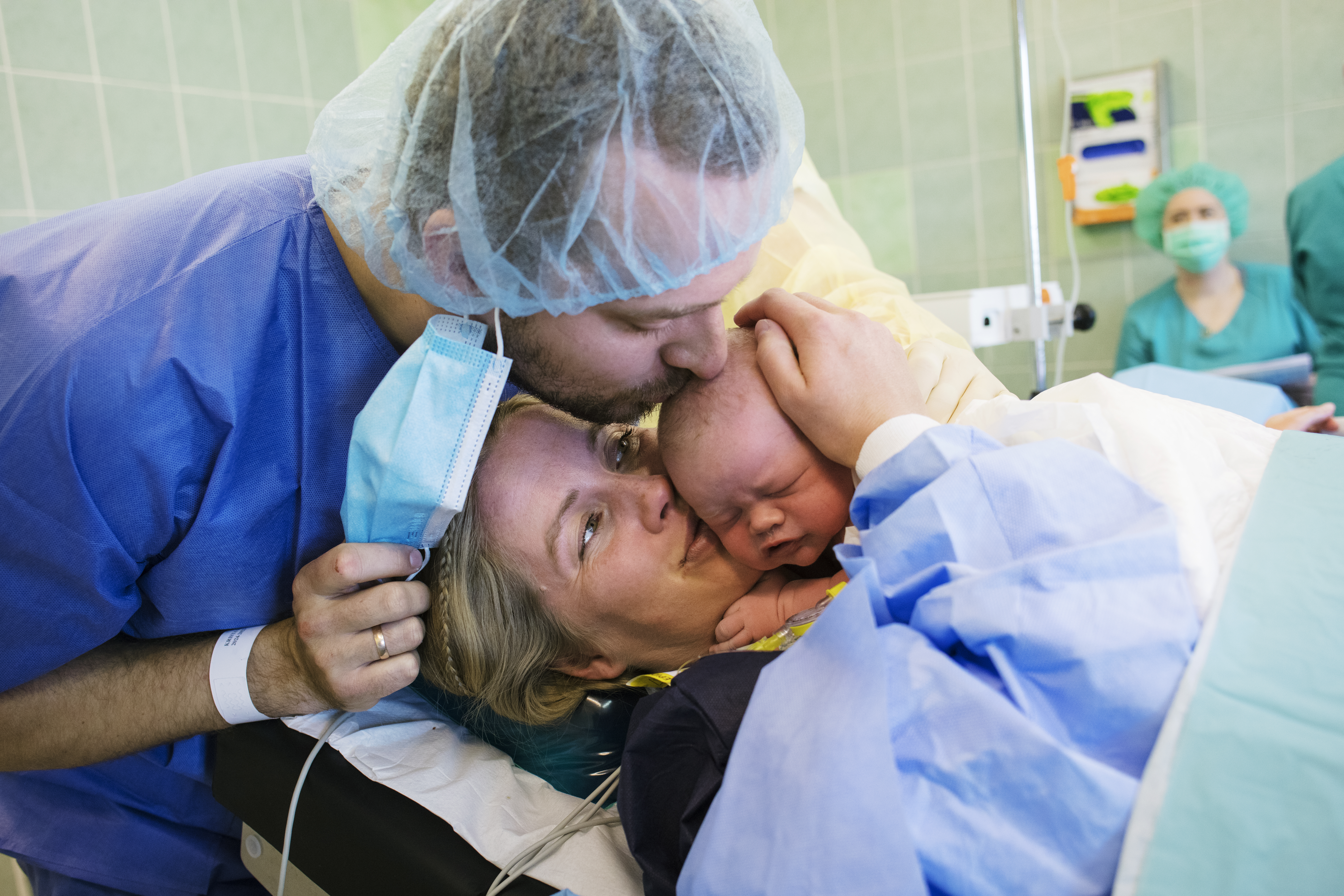Caesarean sections
A Caesarean section (CS) is an operational delivery, when a baby and the placenta are removed through an incision in the anterior wall of the abdominal cavity and the uterus.
During CS, pain is relieved under general or regional (spinal or epidural) anesthesia. Nowadays the most of CS are performed in regional anaesthesia and general anaesthesia is used only in specific medical conditions.
Today surgical procedures (including CS) are incomparably safer than they were even ten years ago nevertheless CSis associated with a significantly higher risk of complications than vaginal delivery.
Riga Maternity hospital recommends CS only if medically indicated. Performance of the CS on patient’s request is a paid service.
Patient-centred Cesarean section
Patient-centred Cesarean section is an approach to performing a Cesarean section (C-section) that places the patient's needs, preferences, and well-being at the forefront of the decision-making and surgical process.
Traditionally, C-sections have been performed in a more medicalised and less patient-centered way.
In a patient-centred approach to C-sections, the healthcare team collaborates with the expectant mother to ensure her preferences and values are considered as much as possible. Some critical aspects of a patient-centred Cesarean section may include:
- Informed Decision-Making;
- Partner participating in C-section;
- Visualisation of birth to parents;
- Gentle and slow delivery of the baby;
- Maternal assisted C-section;
- Skin-to-skin contact;
- Immediate breastfeeding;
- Delayed cord clamping;
- Partner cord cutting;
- Emotional Support;
- Minimising Trauma.
The patient-centred approach to Cesarean sections recognises that childbirth is a significant life event and that the emotional and psychological well-being of the mother is essential in addition to the safe delivery of the baby. It seeks to make the experience as positive, respectful, and personalised as possible while ensuring the mother's and baby's health and safety. This approach aligns with the broader concept of patient-centred care in healthcare, which emphasises the importance of involving patients in their care decisions and respecting their values and preferences.

